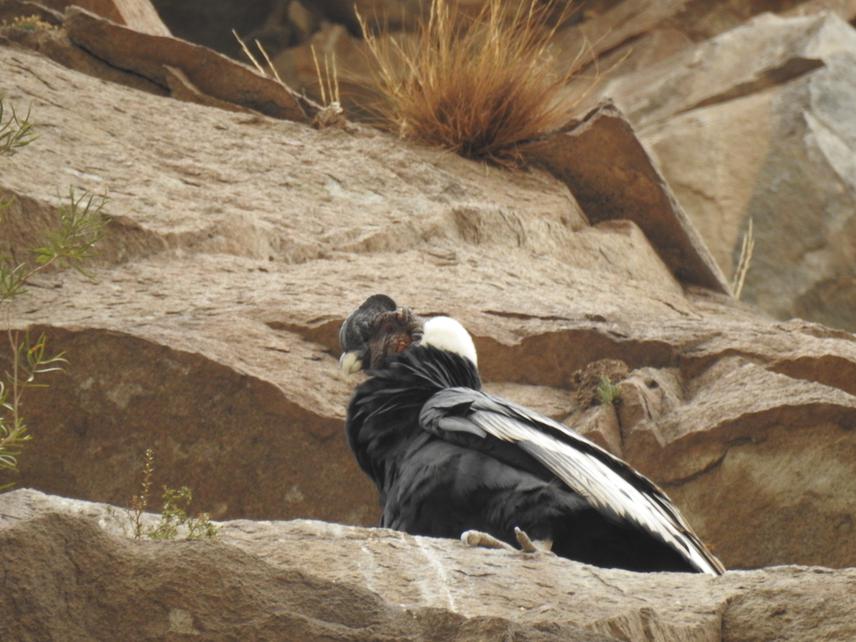Melanie Duclos Katunaric
This study seeks to understand if Andean condors, present in the two high density nuclei in central and southern Chile, belongs to a single population or if they are genetically structured. Through the genetic analysis of specie-specific microsatellite markers, we will be able to:
- Determine if there is gene flow between the two high density nuclei in northern and southern Chile.
- Determine the genetic diversity of the condors that inhabit central and southern Chile.
- Determine if there are family groupings in the different vulture individuals within resting places.
This information will be useful to guide conservation efforts.

Adult male in its roost.
Vultures are nature’s most successful scavengers and provide an array of ecological, economic, and cultural services (Ogada et al. 2012). Currently, 52% of vulture species worldwide are threatened with extinction, 65% of vulture populations are decreasing (IUCN 2017) and the population of Andean condor (Vultur gryphus) is in a certain decline too (Lambertucci 2007, IUCN 2017).
In Chile there are two high-density Andean condor nuclei: one in the Central zone, highly intervened and other in the Southern zone, scarcely intervened. Despite its high mobility, there is still no evidence of home range overlapping between these two areas. These situations could lead the Andean condor population to a substructure and loss of genetic diversity, increasing the risk of extinction and affecting the viability of populations.
This study seeks to understand if Andean condors, present in the two high density nuclei in central and southern Chile, belongs to a single population or if they are genetically structured. Microsatellite markers will allow us to characterize its population structure, estimating philopatry and kinship coefficient, possible inbreeding and degree of gene flow. This information will be useful to establish conservation units and to guide conservation efforts.
The fieldwork strategy is prospect approximately 34 communal roosts in spring 2018, collecting molted feathers (non-invasive sampling method). Feathers will classify according to: state (recent molting), type (side and number of flight feather), in order to avoid selecting feathers of the same individual; and the color pattern (differences between age classes (Alcaide et al, 2010)). Then, extract the calamus for DNA analysis using the protocol described by Truett et al., (2000). Sexing will be done using the universal primers P2 and P8 (Griffiths et al., 1998).
The project will increase knowledge about behavioral ecology and the diversity status of the species. Considering the existence of social subdivisions in the quantification of the genetic structure of the Andean condor (Dobson, 1998), will serve to better understand the allelic relationships (homozygosis or heterozygosis) in a spatial context.